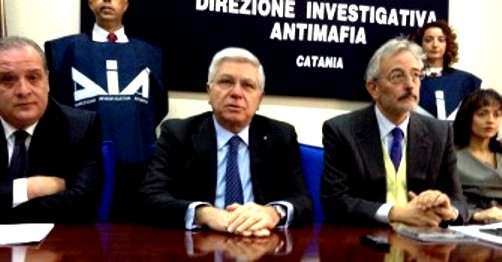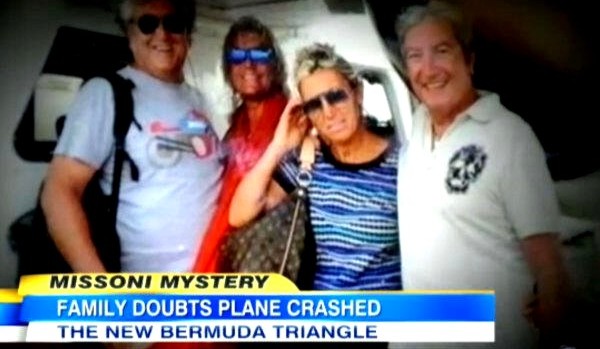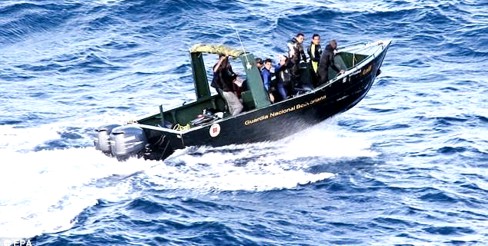
Category: Italian context
Italy Fights For Justice For A Murdered Student As The UK Government Never Did
Posted by Peter Quennell
Above: a minute’s silence in the Italian parliament for Giulio Regeni an Italian student found slain in Cairo a few days ago.
Hundreds of mourners have gathered in a village in northern Italy for the funeral of Giulio Regeni, a Cambridge PhD student found tortured and dead in a ditch on the outskirts of Cairo last week.
Flags were flying at half-mast in Fiumicello, where villagers offered spare rooms and couches for the 28-year-old’s friends and family, as the diplomatic fallout from his death continued in Rome.
The Italian prime minister, Matteo Renzi, warned Egypt that the health of the relationship between the two countries rested on the quality of the investigation into Regeni’s killing.
Compare with how the UK government reacted after Meredith died. Basically it looked the other way. Many in Italian justice were amazed at how totally disinterested the UK government was in the case in all the years since Meredith’s death.
The US government sprang into action to help Knox and to make sure she was treated right, though there was no proof the Italians would do anything but. They found her a Rome lawyer with good English (Carlos Dalla Vedova) and monitored all her court sessions and her four years in Capanne.
This came at a probable cost of over half a million dollars. And that is just the public support. Nobody ever said “the Federal budget cannot stand this”.
The extent of the British government in pushing justice for Meredith and her family? Exactly zero over the years.
Nothing was ever paid toward the legal costs or the very high travel costs of the Kercher family to be in court as the family finances ran into the ground. Nobody from the Foreign Office in London or the UK Embassy in Rome observed in court except in Florence, just the once.
Appalling pro-Knox Italy-bashing in the UK media based on highly inaccurate accounts was never tamped down - presumably because the Foreign Office was itself in the dark, and did not have a clue what was going on.
The ugly message this sent to the world? If you are going to be a student in foreign trouble, be an American or Italian. Not a Brit.
However, years after four-year-old Madeleine McCann disappeared in Portugal, the UK government is spending heavily to right a possible wrong there. Back in 2007 Meredith’s case and Madeleine’s case began just a few weeks apart.
Maybe to right a possible wrong in Italy, the UK government could do likewise here.
Prime Minister Renzi’s Proposed Reforms Might Have Received A Strange Nudge
Posted by Peter Quennell

So the President of Iran and the Prime Minister of Italy sit in a museum in Rome and stare at… a horse.
You probably know by now that eight nude statues in a Rome museum, male and female, were boxed up on somebody’s orders when the President of Iran visited to discuss several multi-billion-dollar deals.
It was hard to see any relevance of the resultant fuss to our case at all, but the New York Times helps us out.
As a consequence of Boxgate, Italy has suffered ridicule. Nothing is worse than ridicule. Here it is merited. Not so much, I would argue, for Italy’s clumsy attempt at courtesy, for courtesy is important and has become an undervalued virtue. Reading the fall of the West into the concealment of a nude is going too far. Mistakes happen.
No, the ridicule is merited because the decision to hide the works of art was, it seems, made by nobody. In Rome, the buck stops nowhere.
The Capitoline Venus just boxed herself up one night because she was bored and took a few deities along with her.
The prime minister, Matteo Renzi, did not know. The foreign minister did not know. The culture minister called the decision “incomprehensible.” They were, they insist (perhaps too much), as surprised as anyone to find all those white cubes “” none, incidentally, provided by the prestigious White Cube gallery in London.
One account has it that a woman named Ilva Sapora who works at Palazzo Chigi, where Renzi’s office is located, made the decision after visiting the Capitoline with Iranian Embassy officials. “Nonsense,” Jas Gawronski, a former Italian member of the European Parliament, told me. The notion that a midlevel Chigi official in charge of ceremonial matters could have made the decision does seem far-fetched. Gawronski believes it is more likely to have been officials at the Farnesina, home to the Foreign Ministry.
One thing can be safely said: Nobody will ever know. I was a correspondent in Rome for some years in the 1980s. Periodically there would be developments in terrorist cases “” the Piazza Fontana bombing of 1969 or the Brescia bombing of 1974. Trials, verdicts, appeals followed one another. Facts grew murkier, not clearer. It would take decades to arrive at convictions that did not resolve doubts. Italy has never had much time for the notion that justice delayed is justice denied.
Renzi has wanted to break with this Italy of murky secrets, modernize it, bring stable government and install accountability.
So this incident in a blazing spotlight could even help to push the current reforms of the justice and governance systems along.
And the strongest reform proponents of all? To escape this hamster wheel, judges and prosecutors of Italy.
Human Rights Group “Human Rights Watch” Gives An Approving Nod To Italy
Posted by Peter Quennell

[Above: Armando Spataro, the chief prosecutor in the 2009 trial in Milan; CIA operatives all absent]
Human rights groups like Human Rights Watch and Amnesty International keep an eye on the Italian courts, as they do the courts of most countries.
When it comes to Italy, they rarely have anything to complain about. Italy has a firm high-profile police presence but when the playing field is level the Italian courts are known to be very fair and prison rates are among the world’s lowest.
Nothing is seen to be broken..
The same applies to the European Court of Human Rights in Strasbourg which receives mind-numbing numbers of spurious appeals from Italy (an unfortunate circumstance for Knox) which repeatedly jump the gun (as Knox’s appeal did) before the Italian legal process is over. But the ECHR only very rarely finds that Italian courts did anything wrong.
In an excellent report by the AP’s Colleen Barry (not our favorite reporter in Florence, but now we have hopes for her) the New York-based Human Rights Watch has just praised Italy for persevering against the CIA operatives who executed an example of extraordinary rendition - kidnapping for torture in a third country of suspected terrorists.
Cassation had just confirmed three of the guilty sentences among the 26 for American operatives earlier handed down:
“It is really a seminal case. It set a very important precedent that unfortunately has not been followed yet by any other countries,” said Judith Sunderland, senior Western Europe researcher for Human Rights Watch. “We certainly hold it as an example how a national judiciary can in fact get to the bottom of an unlawful rendition.”
The Obama administration renounced the Bush administration’s practice of extraordinary rendition, and neither the CIA or State Department seems to have done very much to help the CIA officers who were being prosecuted.
Alessia Sorgato, who was one of four court-appointed defense lawyers, complained the U.S. government had not responded to requests for help to defend their clients.
None of the court-appointed lawyers had any contact with their clients. U.S. officials only granted two of the defendants permission to seek their own counsel, toward the end of the trial…
Leader Robert Seldon Lady did possibly get some minor official help to disappear recently within the United States, but has since spoken out against the CIA and State Department bitterly. So did other CIA operatives.
At the same time, the Italian government (think Ministry of Justice) has been fairly passive, and allowed the courts to increasingly confirm the convictions, except for several Italian ones (they were declared military as was one American).
These outcomes from Cassation may not result in former CIA operatives ending up in Italian prisons. But life for perps on the run can be made hell worldwide under an Interpol Red Notice. So civil rights groups are not unhappy.
Amanda Knox, learn something.
[Below: human rights groups in Italy kept up pressure]

Italy’s Anti-Mafia Winning Push In Co-operation With FBI Is Headed By Arturo De Felice, Who Was…
Posted by Peter Quennell
Dr Arturo De Felice (at center below) was formerly the head of Perugia’s police. He ran this show while the investigations into Meredith’s murder went on.
It was his police officers who conducted the witness interrogation about which Amanda Knox has told so many lies. Defenses tried to impugn police performance, but fell absolutely flat. Not one police action has ever been criticised by any judge.
Like Dr Giuliano Mignini and many others who performed so well, Arturo De Felice has been honored and promoted. He now heads an elite national organization in Rome much admired in Italy which works on a daily basis with the FBI.
He will be able to pull many strings if Knox tries to mount an extradition fight - especially one based on Knox’s endemic lies about the police.
Here are several recent English-language reports of anti-mfia gains which name Dr Felice - the same highly successful police official who foolish amateurs like Michael Heavey and Steve Moore and Bruce Fischer and Doug Bremner (none of whom speak Italian) have impugned.
- Italian Authorities Pulled Off The Largest Seizure Of Mafia-Linked Assets In History
- Italy files new charges over judge slain by mafia.
- Italy seizes wind and solar trove from Mafia
- After 20 years, hunt for fugitive Sicilian Mafia boss intensifies
The huge joint FBI-Polizio operation described in the video at top and also here as resulting in many arrests in Italy and New York city is another feather in Dr De Felice’s cap.
Try telling Dr De Felice “No, you got it wrong, and we wont extradite.”

FBI Reporting Close Co-operation With Italy In Arresting And Soon Extraditing A Fugitive Swindler
Posted by Peter Quennell

A new FBI report in the news.
It is still more confirmation in line with many previous posts here that US and Italian crime-fighters respect one another and work closely together - and don’t turn a hair at requests for extradition.
The fugitive fund manager Florian Wilhelm Jürgen Homm could face 25 years in prison. The FBI explains what he is accused of:
Florian Wilhelm Jürgen Homm, a German hedge fund manager who was on the run for more than five years, has been arrested in Italy on federal fraud charges that accuse him of orchestrating a market manipulation scheme designed to artificially improve the performance of his funds, a fraud that led to at least $200 million in losses to investors around the world….
Homm was the founder and chief investment officer of Absolute Capital Management Holdings Limited, a Cayman Islands-based investment advisor that managed nine hedge funds from 2004 until September 2007. The criminal complaint filed in United States District Court in Los Angeles alleges that Homm directed the hedge funds to buy billions of shares of thinly traded, United States-based “penny stocks.” Homm caused many of the purchases of penny stocks to be made through Hunter World Markets Inc., a broker-dealer in Los Angeles that Homm co-owned. Homm also allegedly obtained shares of the penny stock companies through various businesses he controlled.
And the FBI credits the role in arresting Florian Wilhelm Jürgen Homm of the Italian authorities.
Homm, 53, was arrested at the Uffizi Gallery in Florence, Italy, at approximately 12:30 p.m. on Friday (local time). Federal prosecutors in Los Angeles obtained an arrest warrant on Wednesday, March 6, after filing a criminal complaint that charges Homm with four felony charges: conspiracy to commit wire fraud, wire fraud, conspiracy to commit securities fraud, and securities fraud. Homm was arrested by Italian authorities after the United States submitted a request for a provisional arrest with officials in Rome.
Barbie Nadeau Reports On A Mystery Disappearance That Is Now Gripping Italy
Posted by Peter Quennell

This MAY be a kidnapping. It concerns Italian fashion house head Vittorio Missoni.
Missoni and several others took off for a short flight from a Caribbean island to Venzuela where he was to board a plane to Italy. One main problem is that so far in clear though very deep water there is absolutely no sign of any wreckage.
Usually in light aircraft crashes in water a few things remain on the surface or soon float to the top. How Barbie Nadeau describes the second main problem.
But more disturbing is a series of cellphone anomalies. On Jan. 6, according to Italian wire service ANSA, more than 48 hours after the plane disappeared, the cellphone belonging to fellow passenger Guido Foresti sent a message to Foresti’s son indicating that the phone was back in range after being out of that zone since earlier that day. Calls made later to both Foresti and his wife’s number indicated that the phones were off.
A day later, calls to Foresti’s wife’s phone rang 10 times before automatically transferring through to the phone’s answering service, indicating that her phone was also momentarily on or back in cell-tower range. According to several Italian newspapers, a list of calls registered by the local Venezuelan telephone carrier the Italians’ phones were roaming through showed that both the Foresti phones made a series of calls at noon on Jan. 4, several hours after the plane disappeared.
The search continues. As with so many Italian fashion houses (see image at bottom) there is an elegant store in Manhattan.





The Sunk Ship: Italian, French And American Systems May All Ensure Justice For Victims
Posted by Peter Quennell

Our series here tracks how the Italian system is performing. On Monday the criminal inquest will begin.
So far it is looking (as usual) pretty good but as the Costa Concordia was an American-owned ship, and as many Americans and French were on board, the French and American systems could pick up a part of the legal strain.
This is a huge case with 32 dead, thousands suffering serious stress, a ship written off, and its expensive refloating for breaking-up elsewhere now under way. Andrea Vogt reports:
The Italian criminal inquest into the Costa Concordia shipwreck finally opens in Grosseto ““ the closest town to the scene of the accident - on Monday 15 October.
The Grosseto judges will hear evidence from a dry but damning 270-page technical report compiled by two Navy admirals and two engineers. It details the maddening series of errors by crew, captain and the cruise company Costa Crociere that doomed the mega cruise ship.
Among the nine people facing charges ranging from manslaughter to abandoning ship is the captain, Francesco Schettino. Given the stories of the mistress ““ a Moldovan dancer called Domnica Cemortan ““ and the accusation that he purposefully took the ship too close to land for a sail-by ‘salute’, his presence alone guarantees a heavy media presence.
The much reviled captain’s wife Fabiola Russo and his girlfriend Domnica Cemortan (images below) both still seem loyal to him but (cartoon at bottom) they may now be his only two friends and one or other could break away at any time.
On [French] Coast Guard orders, the 456 [French] survivors were interviewed by the French Gendarmerie, who asked them all the same questions, amassing a formidable database of independent depositions detailing their experiences and the post-traumatic stress many suffered.
Half of them formed a victims’ association to bargain collectively…. The group met in recent weeks to discuss progress in the case and seek comfort in their shared suffering.
To measure the psychological impact, a study was commissioned by a psychologist from the University of Haute Alsace. It revealed trauma typical of survival scenarios: nightmares, anxiety, depression, anger, a sense of abandonment and a loss of faith in the fairness of fellow humans (especially among the mothers with children)....
The massive body of evidence assembled in France has not gone unnoticed in Italy, where it will likely be submitted as evidence. “The Italian magistrates are very interested ““ we have 456 different people responding to the same questions,” Bertrand Courtois told The Week.
Carnival Line’s American stock is still an under-performer, though its fleetwide systems have been tightened up, and the same with other cruise lines. Generally a safe industry but with spectacular disasters now and then.



Giulia Bongiorno Loses A High Profile Case Watched All Over Europe And May Soon Lose Another
Posted by Peter Quennell

Crime fascinates Italians but unfortunately (or fortunately) there isnt that much of it in Italy.
The real national pasttime is soccer as the thousands of YouTubes and Google images and news reports and hundreds of blogs attest. The case Giulia Borngiorno has just so publicly lost concerns the coach Antonio Conte (image below) of the crack Turin club Juventus.
The Juventus coach Antonio Conte is set to miss the whole of the Serie A season with the defending champions after losing his appeal against a 10-month ban over a match-fixing scandal.
Conte, who led an undefeated Juventus to the Italian title in his first season in charge, was banned on 10 August for failing to report two incidents of match-fixing in the 2010-11 season when he was coach of Siena.
The Italian federation (FIGC) said in a statement on Wednesday that Conte, whose hearing was heard on Monday, had lost his appeal.
Giulia Bongiorno seems to have a tendency to be a sore loser. La Gazetta del Sporto quotes her “the dog ate my homework” excuse thus:
Giulia Bongiorno said “” “We were not given the opportunity to defend ourselves to the full. This is a violation of constitutional rights which go far beyond these issues. Negotiating sentences is becoming very attractive for those who falsely turn state’s evidence,” said Giulia Bongiorno, Antonio Conte’s legal representative.
“If you examine Carobbio and find him not credible, and if you take one of his crutches away (the charges regarding Novara v Siena, Ed), the other one will collapse too, because Conte is being charged with the same thing for Siena v AlbinoLeffe. Carobbio is a bit like Jessica Rossi at the Olympics, and the only clay-pigeon missed is Novara v Siena. And our intention was not to obtain a reduction in the sentence, if it had been we would have negotiated.”
This is the most public case Bongiorno has lost since the Andreotti mafia-connection appeal in 2002. She was on the defense against Prosecutor Dr. Sergio Matteini Chiari.
This is the same Dr. Sergio Matteini Chiari who as the highly competent head of the Umbria courts’ criminal division was first nominated to preside over the Sollecito-Knox appeal.
Giulia Bongiorno, who did some very odd things during the trial and appeal to ensure winning, at least one of which is being investigated, is also the powerful head of the justice committee in the parliament.
Is that the mother of all conflicts of interest or what?! We know of no parallel in any other country and it seems highly unconstitutional. Nevertheless, despite all the caution of the Italian justice system, this conflict is allowed to persist.
In November 2002 Prosecutor Chiari won his prosecution appeal, and the ex-PM Mr Andreotti was sentenced to 24 years (later reversed by the Supreme Court).
Giulia Bongiorno was widely reported as collapsing in court at the verdict, and seemed to take it very hard.
Fast forward to 2010. Suddenly Giulia Bongiorno is about to face Dr Chiari once again, as a judge in what was to be a very tough appeal. Under UK and US law, she would have had to be the one to step aside, or not even take the case back in 2008.
But she didn’t step aside.
Instead, all of a sudden, lo and behold, her nemesis back in 2002 is yanked off the 2011 appeal trial, and seemingly demoted to head the childrens’ branch of the court. Meanwhile, labor judge Hellmann is in effect promoted, into being the lead judge in the murder appeal.
Who made the call from Rome that fixed this suspicious judge rearrangement? Rumors around Perugia suggest that maybe it was made or inspired by the head of the justice committee in the parliament.
True or not, the seriously out-of-his-depth labor judge Hellmann joined the seriously out-of-his-depth civil judge Zanetti - and produced an appeal verdict and reasoning the chief prosecutor of Umbria Dr Galati sees as a complete fiasco.
Contending with the myriad illegalities of this reasoning is for Dr Galati like shooting fish in a barrel. Bongiorno may soon be facing yet another big loss if Cassation accept his prosecution arguments.
As they say, always be careful what you wish for. Wishing for Hellmann might have been a bridge too far.
Italy Works With Australia On A Complex And Possibly Precedent Setting Case
Posted by Peter Quennell
[Above: Australian Broadcasting Corporation report from Brisbane posted 3 days ago]
Italy has the reputation of being among the more diligent of countries in respecting international law and conventions. So does Australia.
But now they find themselves in a strange kabuki dance fraught with international tension, courtesy of two divorced parents.
The image below with the faces disguised appeared yesterday on Facebook. It shows an Italian father and his four daughters on the coast near Brisbane in Australia. With one newspaper exception which could result in a heavy fine, no Italian or Australian newspapers are publishing their names.
The reason is that this is a battle over illegal child abduction and both countries have laws shielding the minors. The mother is an Australian who married an Italian in Italy and they had the four children there. When they were divorced the mother and father were awarded joint custody so the father would get to see his daughters half of the time.
Two years ago the mother took off back to Australia with the girls. The Australian authorities were starting to implement the Hague Convention on the Civil Aspects of International Child Abduction which says cases must he handled speedily and the country of origin has sole rights over matters of custody.
The mother missed a court-ordered deadline of 15 May for a return of the children to the father who had flown to Australia to get them. They went into hiding but were tracked down by police to a house or hotel on the Queensland Sunshine Coast.
It now appear that the four girls want to remain in Australia, and although under the Hague Convention they dont as minors have separate rights, majority Australian sympathy may be on their side. The mother has just made claims about the father which he has denounced and hence the image of himself and the girls below which he posted on Facebook.
The precedent is in whether the children should have a say, the resolution of which could affect future abduction cases world-wide. Australia’s High Court will decide the case one way or another this August.
Here’s a past post on a remarkably similar case. Liam is still in Italy.

Italy Continues The Search For True Justice In A 30 Year Old Case
Posted by Peter Quennell

Nothing if not tenacious, those Italian prosecutors and police - and Italian TV on which the victim’s family never stopped pressing.
This is the case of 15-year-old Emanuela Orlandi, a Vatican citizen, who disappeared in 1983. At the time the Vatican was much in the news because of a banking scandal that spread to London and because of an attempt made on the Pope’s life.
The Vatican is back in the news now because finally it stopped blocking for unclear reasons the exhumation of a crime gang leader who for unclear reasons was buried under a Vatican basilica in Rome. The exhumation has now been done and there were some extra bones and pending tests may show that they are Emanuela’s.
The New York Times says there are at least three theories that could explain the disappearance and probable murder of Emanuela.
In 2005, an anonymous phone call to a television program about the disappearance added a piece to the puzzle:
“To find the solution to the case go and see who’s buried in the crypt of the basilica of Sant’Apollinare,” an unidentified man said, referring to the tomb of the local mob boss, Enrico De Pedis, known as Renatino, who was gunned down in Rome in 1990.
The caller also implied that Emanuela had been kidnapped as a favor to Cardinal Ugo Poletti, who in 1983 was the vicar general of Rome. Cardinal Poletti died in 1997, and Archbishop Marcinkus in 2006.
Questions remain about why Mr. De Pedis, a member of the Magliana crime gang, was buried in a church owned by the Holy See. His tomb is in a small locked room in a crypt under the church…
To lay rumors to rest that the Vatican had obstructed investigations into Emanuela’s disappearance, last month the Holy See agreed to the opening of Mr. De Pedis’s tomb.
Whether the police can now narrow down to a single theory we soon shall see. After 30 years they are still doing what they can for the real victim. And her family never rests.
Below: images of Emanuela’s brother Pietro, a Vatican protest, and the exhumation yesterday of Mr De Pedis.










